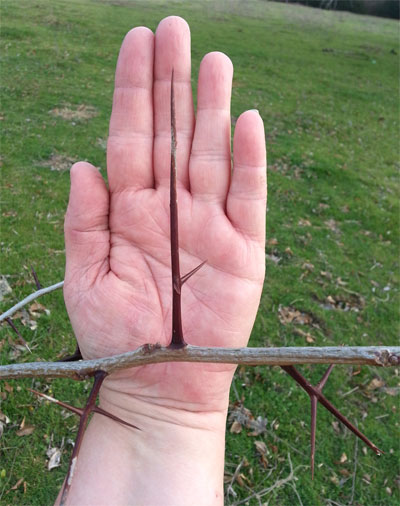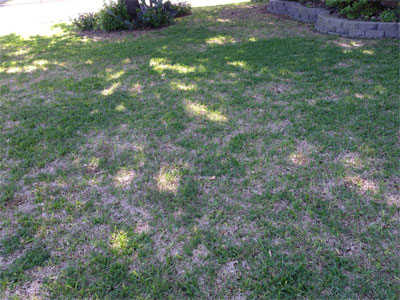Questions and Answers: June 2014
Oh, my! When we downloaded this month’s questions, there were dozens and dozens and dozens. With great appreciation to all who sent questions, thank you. If your question hasn’t been addressed below, my most sincere apologies. I’ve given my very best effort to choosing those of greatest reader interest (my subjective opinion). I’ve had to bypass the many plant ID questions, since those are generally of interest only to the person sending the photo. Your local nurseryman will be your best source of information for those questions. And I’m only going to address a couple of the many, many St. Augustine questions. They all sounded almost identical.
So, with those apologies, thanks and explanations out of the way, click here to send me a photo and question for the next issue. Here are my answers to the questions I’ve chosen this time around. My replies will be a bit brief in the interest of time.
Question: Our Chinese pistachio and Shantung maple both have low branches. How high can they be removed? When should we do so? How do we remove them (angle cut, straight)? Do we apply pruning paint? M.G., Forney.


Answer: You can remove some of the lower branches now. Do so one branch at a time until each tree has a pleasing growth form. It’s better not to try to remove too many branches at this point. You don’t want to come up more than 40 percent of the way from the soil line to the top of the tree. You may also want to remove one or two tip-ends of branches that remain, to balance the trees’ shapes. Cuts should be flush with the main trunk. Do not apply pruning sealant (unless you are pruning oaks).
Question: My large oak tree has clusters of leaves falling to the ground. The tree appears healthy otherwise. I can’t find any insect to spray. My neighbor’s tree is doing the same thing. What should we do? N.B., Winnsboro.

Answer: There has been a harmless insect gall in this stem tissue. The larvae feed on the wood of the twig before pupating into adults, flying away, mating and repeating the process. There is no cause for concern, nor is there any type of prevention or control.
Question: We have had fairy rings in our lawn. These photos are from last summer, and we hoped the winter would have killed the fungus, but it’s still there. The St. Augustine has not come back, but there is bermuda. What should we do? (Photo taken in late summer, 2013) L. and B. B., no city given.

Answer: This is a fascinating photo. Fairy rings, for others who are not familiar with them, are the result of mushrooms that develop in increasing circles, like ripples on a still pond. As the mushrooms are active, they tie up nitrogen that is in the soil, resulting in the temporary discoloration of the grass. Once the mushrooms run their life cycles and die, the nitrogen is released back into the soil. Having seen about a thousand St. Augustine lawn photos this spring (possible exaggeration), I would say that there is a good chance that the grass had freeze damage this past winter – much more likely than harm from the fairy rings. However, freeze damage really depends on where you live – the reason I always ask for that information. We in North Texas saw a lot of St. Augustine loss and setback.
Question: What would cause this tree to ooze sap? It’s actually a friend’s tree, and I don’t know its type. What might have caused this? P., Duncanville.

Answer: This is a lacebark elm, and I would say that it has the bacterial infection called wetwood. It impacts the sap, causing it to flow from open wounds. Elms are certainly susceptible. Your friend should have a certified arborist look at the tree. He also needs to improve his pruning technique so he doesn’t leave stubs as long as the ones that are showing. Cuts should be made virtually flush with the main trunk or a major branch.
Question: I have a 15-acre tract that is filled with honey locust trees. Their thorns are up to 5 inches long. I have animals and equipment, and I need to get rid of these trees as quickly as possible. I have all sizes of them. How can I eliminate them soon? M.C., Dallas.

Answer: We faced the same issue when we moved to our 11 acres in the country. I couldn’t keep tires inflated. I hired a contractor with a front-end loader to knock the big trees down and lift up the stumps. Then we carefully used leaf rakes (and wore leather-soled shoes) to get rid of all the long thorns that broke loose in the process. Broadleafed weedkiller sprays will eliminate seedlings. After one year of fighting the mother trees, we got rid of almost all of them. But we had to stay vigilant. We have had no issues since.
Question: I have found red oak leaves dropping. They have holes eaten in them, and there are spots of something where the veins split. What is causing this? B.R., no city given.


Answer: Nice choice of backgrounds for your photos. You certainly caught my eye! The skeletonizing of the leaves is the work of sawflies. They’re basically harmless. I see them each year on a bur oak that’s outside my home office window. No cause for concern, and difficult to control anyway. The fuzz you’re seeing is natural pubescence. It’s normal. So, the score is You 2, Worries 0.
Question: My nandina looks like it has two sections. If I cut out the “giraffe necks,” it will shorten the bush considerably. What should I do? W.J., Mansfield.

Answer: Before the day was over, I would use long-handled lopping shears to remove the tallest canes to within 1 inch of the ground. They will regrow with nice, new shoots. This is actually a process you should repeat every January or February, to keep nandinas compact and handsome. Each year you should aim to remove the tallest one-third to one-half of the canes.
Question: I have lived in my house for more than 20 years. In the past five years, my St. Augustine has died out. I blamed it on the shade and my sporadic watering during the dry times. I’ve pruned back the shade trees, invested in new sod and a sprinkler system. Do you think this is Take All Root Rot? R., Midlothian.


Answer: In spite of your pruning, this is still not nearly enough sunlight. I have lived this same challenge for 30 years in our pecan forest, and I have gradually converted lawn space over to shade-tolerant groundcovers (mondograss, liriope, ferns, English ivy, aspidistra, even Asian jasmine and purple wintercreeper euonymus). If you happen to be on Facebook, you’ll find a lot of my suggestions in my Notes. Here is a link to one of them. (By the way – neither trimming trees “back” nor even thinning their canopies will provide long-term answers to shade issues. As determined by their genetics, the trees merely grow back to their former shapes and sizes.)
Question: I don’t believe I have ever seen this on a redbud. What are they, and do I need to be concerned? T.T., Frisco.

Answer: These are scale insects, and I guess they probably have potential to do some kind of damage (everything has to eat something). However, I’ve observed them many times on many types of trees, and I’ve never seen them do any damage. If you’re concerned, you can treat them with an insecticide that is labeled for scale insects. Or, if you don’t have too many, just crush and brush them off with a rag.
Question: We lost a couple of these nandinas last year. It appeared to be iron deficiency, so we dug up the area and replaced that soil with good garden soil. We put in new plants and mulched the bed. A pH tester shows the bed to be at 6 to 7. What is wrong with these plants? P.M., Lakeside near Fort Worth.

Answer: This is still iron deficiency. I can’t argue with the pH test, but something is amiss. Either the irrigation water is way too alkaline to suit these plants, or there is something else going on here. I would suggest adding a chelated iron product as well as a sulfur soil acidifier to keep the iron in a soluble form that the plants can access. I have never seen an insect or disease bother nandinas. For what it’s worth, this planting looks like it needs a high-nitrogen lawn-type fertilizer (without weedkiller included) and careful watering.
